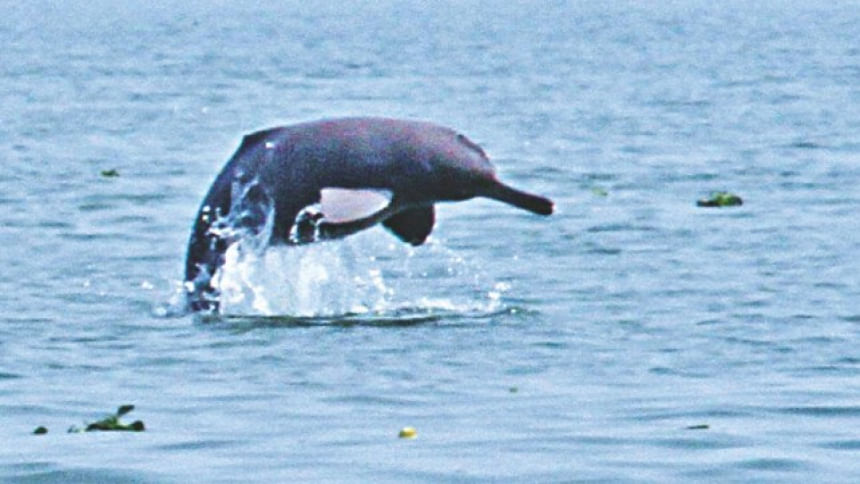Dolphins vanishing from Halda

The freshwater dolphins in Bangladesh are only decreasing in number over the last few years mainly for manmade hazards, say experts.
Talking to The Daily Star, eminent Halda researcher Manzoorul Kibria reminisced how he encountered dolphins of the Ganges even in 1982.
At that time, river dolphins of the Ganges could be found in the Halda, adjacent to Nazirhat village of Chattogram's Fatikchhari upazila. The amazingly intelligent mammals, however, disappeared over the last few decades, he said.
He said, "I first saw the aquatic mammals in my school days standing on a bridge at Nazirhat. Now, not only the dolphins disappeared from Nazirhat but also from the 40-kilometres downstream.
"You would see no dolphin from Nazirhat to Sattarghat."
The Halda alone has lost 27 dolphins, belonging to Platanista Gengetica, in the last three years. Eighteen died between September 2017 and February 2018 whereas nine more died since February 2018 as of now, Prof Kibria said.
The Halda researcher identified fishing nets, propellers of mechanised boats, decreasing water level of upstream due sluice gates and dams, and industrial pollution as some of the main reasons why the dolphins were dying.
"We conducted first autopsy of a dolphin in 2018 where we saw the injuries caused by sharp propeller. Later, we requested authorities to ban plying of mechanised boats in the river which were complied with by the government in the same year. After that the death of dolphin reduced significantly", he added.
According to his research, Kibria said, he found 166 dolphins through direct sighting at the Halda. He was now conducting a survey using sonar and GPS system to get exact figure of the mammals.
In the wake of such scenario, the world is observing International Freshwater Dolphin Day today.
The Forest Department of Bangladesh has undertaken a ten-year-long conservation plan from 2020 to 2030 to protect species that are declared endangered by International Union for Nature Conservation (IUCN) in 2015.
Mohammad Abdul Aziz, national consultant of Dolphin Conservation Action Plan, also a professor of zoology department at Jahangirnagar University, said that dolphins faced several threats to its existence.
Losing number river gorges due to grabbing and sedimentation, low water level in winter, increasing traffic of vessels in the waterbodies have led the species to get enlisted as endangered species, he said.
Still the dolphin has optimum population to be conserved in the Padma, the Jamuna, the Meghna, the Brahmaputra and the Karnaphuli, the Halda, the Poshur and the Doleswhori rivers, he hoped.
Mihir Kumar Dey, conservator (wildlife and nature conservation) of Bangladesh Forest Department, said the Dolphin Conservation Action Plan would provide a roadmap on how to conserve the endangered species which is an important part of river ecosystem.
"We will work with concerned authorities, stakeholders, communities to make sure that the plan is being properly followed", he added.

 For all latest news, follow The Daily Star's Google News channel.
For all latest news, follow The Daily Star's Google News channel. 



Comments